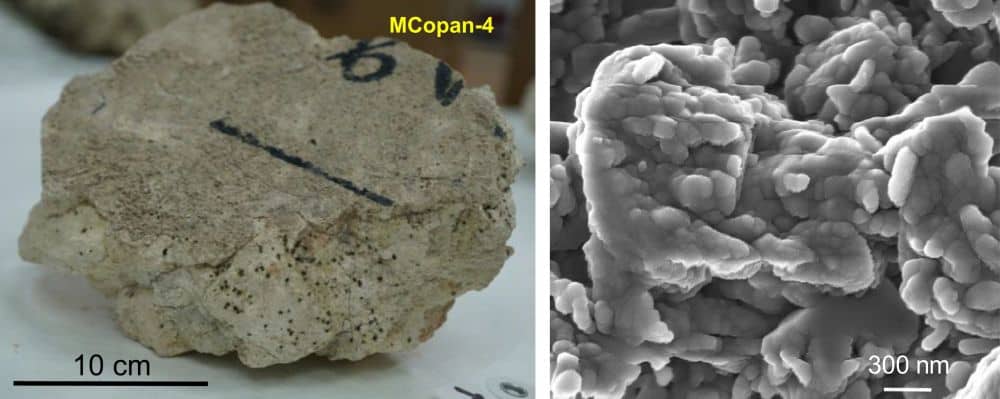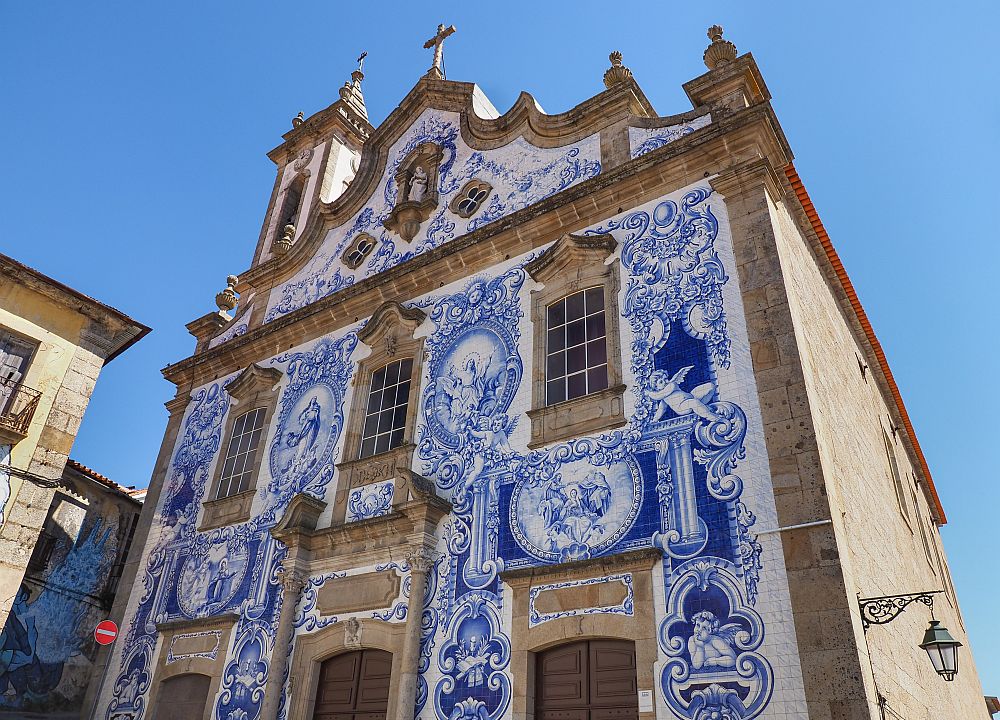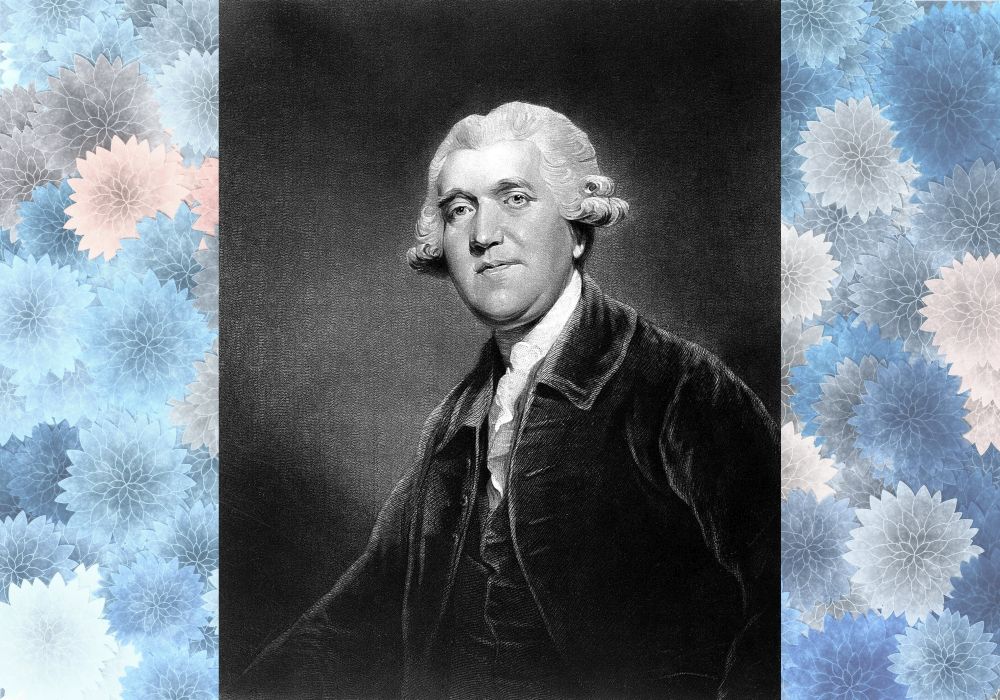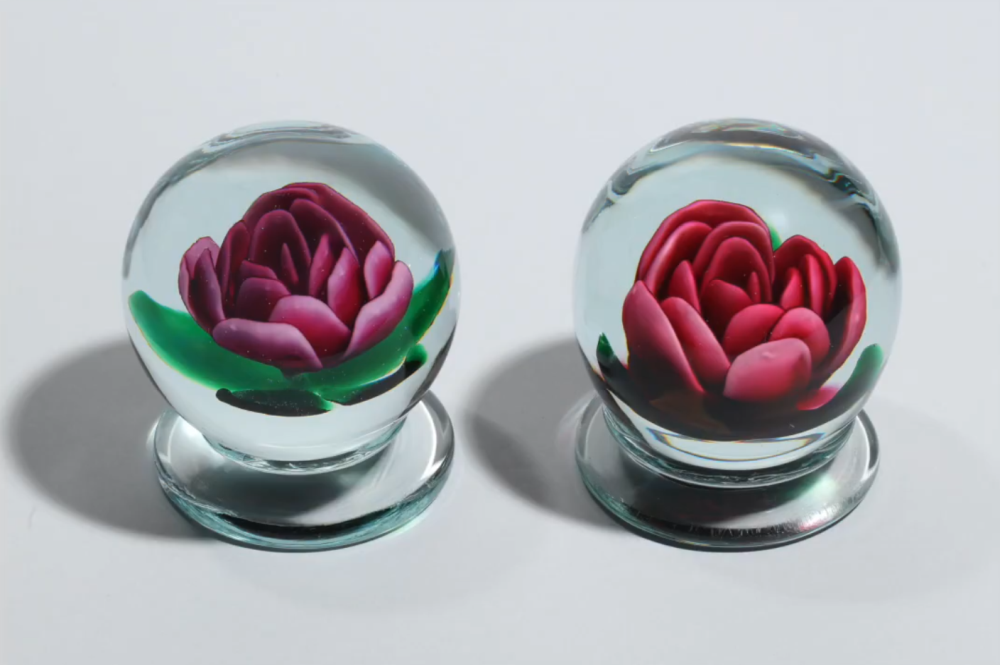
[Image above] (Left) A Maya plaster sample corresponding to a fine two-layer plaster floor from the mid-Classic period (500–700 CE). (Right) A field emission scanning electron microscope image of the sample showing its nanogranular structure. Credit: Rodriguez-Navarro et al., Science Advances (CC BY-NC 4.0)
The high-profile collapse of several condominium and apartment buildings in recent years have tragically highlighted the limits of today’s building regulations and residents’ needs. These events are all the more upsetting when considering that, throughout history, humans have shown it is possible to make free-standing structures that last for millennia.
Yet in many cases, the techniques that ancient masons used to construct these long-lasting structures are long lost to history. For example, researchers have for years tried to identify the secrets behind Roman concrete’s strength. Just this year, yet another piece of the puzzle was added to the literature.
Lime plasters and mortars from the ancient Maya civilization are another long-lasting material that researchers are working to understand. In April of this year, researchers from the University of Granada in Spain published an open-access paper that provides more answers to this question—and potentially helps to explain the performance of lime plasters and mortars made by other ancient civilizations as well.
A brief history of the Maya
The Maya civilization is considered one of the most dominant Indigenous societies to have developed in the Americas prior to the arrival of the Europeans. While the origins of Maya culture remain murky, it is believed to have first emerged between 7000–2000 BCE and reached its peak in 200–900 CE.
The Maya civilization was not united under one central leader. Rather, it consisted of numerous small states that encompassed much of the northwestern part of the isthmus of Central America, including all or parts of southern Mexico, Guatemala, Belize, Honduras, and El Salvador.
Though the civilization’s influence started to decline in the 800s, the last Maya state did not fall until 1697, after about 150 years of Spanish conquest.

Map of the Maya region, with major rivers, mountain ranges, and states identified. Credit: Simon Burchell, Wikimedia (CC BY-SA 4.0)
However, “It was the Maya political system that collapsed, not [their] society,” says Lisa Lucero, professor of anthropology and medieval studies at the University of Illinois at Urbana-Champaign, in a Live Science article. “The [more than] 7 million Maya living today in Central America and beyond attest to this fact.”
Learn more about modern Maya at this link.
Unraveling the secrets of Maya plaster
Like other pre-Columbian civilizations, the Maya independently figured out how to turn limestone into plasters and mortars. However, Maya plasters are known for being particularly durable, with most generally lacking typical damage features (such as fracturing or scaling) despite having stood for centuries in a hot and humid tropical environment.
Many research groups have tried to identify the secret behind Maya plaster durability. It is believed that natural additives have something to do with it, as certain organics, such as carbohydrates, have been found in Maya plasters and mortars that match those present in common trees in the area.
In the new open-access paper, the Spanish researchers collected samples from mid- to terminal-classic (540–850 CE) Maya structures at the Copán archaeological site in Honduras. The sampled structures at this World Heritage Site included a temple called Rosalila, which was the principal religious sanctuary at Copán in the late 6th century CE. Rosalila is known for its excellent state of preservation and elaborate stucco decorations.
Rather than just bulk chemical analysis, the researchers performed various microscopy, spectroscopy, and diffraction analyses on the samples so they could gain a deep understanding of the samples’ crystalline structures.
The analyses showed that most samples contained organic molecules, specifically polysaccharides, that matched the bark extracts from local trees. Additionally, these samples had a crystalline structure that looked very similar to the tough calcium carbonate structures found in sea urchin spines and mollusk shells.
Were the organic molecules directly responsible for the formation of this biomimetic structure? To test this hypothesis, the researchers worked with modern local Maya masons to obtain polysaccharide-rich bark extracts from the local trees, which they then used to make their own lime plasters.
Careful observation of the plasters throughout the fabrication process showed that the organic additives did trigger a similar formation pathway seen with calcium carbonate biominerals. Plus, once set, the resulting lime plaster had a similar crystalline structure to the Copán samples.
“Apparently, by serendipity, or more likely by trial and error, the Maya masons formulated biomimetic lime plasters with superior properties and durability,” the researchers conclude.
For the samples that did not contain organic additives, the researchers hypothesized that it may be due to the plaster’s end-use application.
“…where a more elaborate plaster or finishing surface was required, organics were added by ancient Maya masons (e.g., in substrates for mural painting, stucco masks, or floors), whereas in coarser plaster elements (i.e., MCopan-1 and MCopan-2), no organics were added (likely to make the process less complex and/or labor intensive),” they write.
Ultimately, these results can help today’s construction industry develop new lime-based plasters and mortars “for their use in architectural heritage conservation and in modern, sustainable construction,” the researchers write.
The open-access paper, published in Science Advances, is “Unveiling the secret of ancient Maya masons: Biomimetic lime plasters with plant extracts” (DOI: 10.1126/sciadv.adf6138).
Author
Lisa McDonald
CTT Categories
- Art & Archaeology
- Construction


